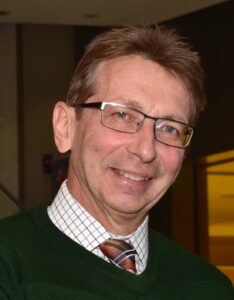From 26 June to 21 July 2023, the Feux team welcomed Arnaud Trouvé as a guest professor at the University of Lorraine.
1/ Can you tell us more about your background?
I am a Professor in the Department of Fire Safety Engineering at the University of Maryland in College Park (USA), which I will be heading on 31 July. I joined the department in 2001 with an engineering degree (1985) and a doctoral thesis (1989) from the École Centrale de Paris, and with experience as a research engineer in the field of combustion.
My research activity focuses on the physical modelling and numerical simulation of fires, with projects ranging from confined structure fires to open vegetation fires and explosions.
I have, or have had, responsibility for managing the combustion and fire science communities within the Combustion Institute and the International Association for Fire Safety Science (IAFSS). I co-lead an IAFSS-supported initiative called the “Measurement and Calculation of Fire Phenomena Working Group” (MaCFP Working Group). I also co-lead a new network of higher education institutions and research laboratories in the field of fire safety engineering called the International Fire Safety Consortium (IFSC).
2/ How did you come to visit LEMTA?
I have been collaborating informally with the Feux team for several years, in particular with Pascal Boulet. Our collaboration dates back to the recruitment of Alexis Marchand at the end of 2016 as a post-doctoral student in my research team, as soon as he finished his PhD thesis at LEMTA. I also took part in three CNRS summer schools on fire safety engineering, co-organised by Pascal Boulet and Anthony Collin.
I am now collaborating more formally with the Feux team as part of the ANR FireWall+ project, in which I am working with Bouaza Lafdal, a post-doctoral student at LEMTA. We are also planning for Anastasia Burdun (Pascal Boulet and Rabah Mehaddi’s PhD student) to come to our department in 2024 to work on the subject of under-ventilated confined fires, with the support of your DrEAM device.
My visit to LEMTA is also taking place in the specific context of fire safety engineering. Despite its importance (think of the forest fires, lithium-ion battery fires and facade fires that regularly make the headlines in the media), this engineering field remains poorly known and underdeveloped. We are therefore seeking to meet our needs through greater coordination of our research efforts, the development of international collaborations and networks, the organisation of exchange platforms (conferences, summer schools, workshops, webinars, etc.), and also through the development of new training courses specialising in fire safety engineering.
3/ What results were obtained during this visit?
The ANR FireWall+ project is a study of the propagation of a vertical turbulent flame along a wooden wall. This study includes an experimental component and a numerical simulation component. The FireWall+ project is led at LEMTA by Gilles Parent. Bouaza Lafdal is responsible for implementing the numerical simulation component and is carrying out calculations using FireFOAM software (FireFOAM is developed by FM Global in the United States, specifically for fire applications, from the open access library known as OpenFOAM). My research team at the University of Maryland works with FireFOAM and OpenFOAM, and we are bringing our expertise in software and physical modelling of wall flames to the FireWall+ project.
The simulations carried out by Bouaza Lafdal are still in a preliminary testing phase, but it can be said that, as things stand, they show good agreement with the experimental results. These simulations are carried out using a fine mesh, which makes it possible to resolve the velocity and temperature gradients at the wall without using a sub-mesh model. These results could subsequently be used to develop the ‘wall laws’ required in engineering projects that use coarser meshes for computational cost reasons.
